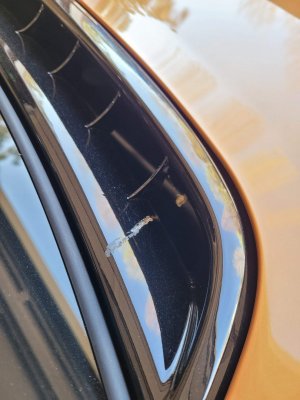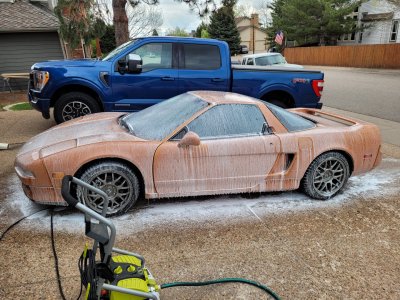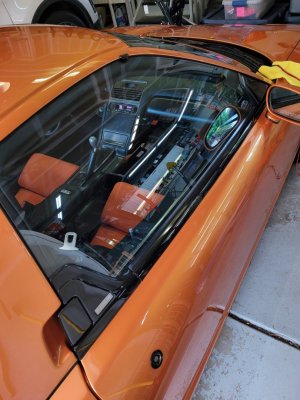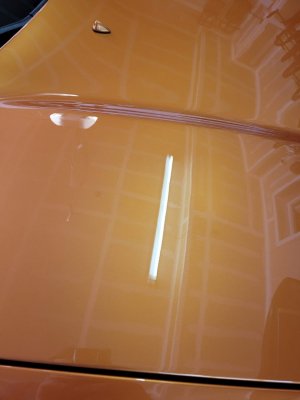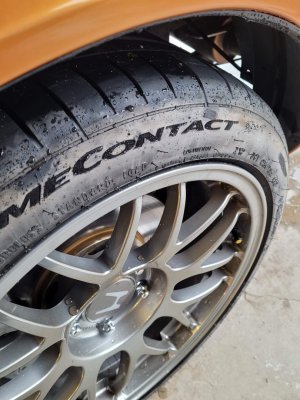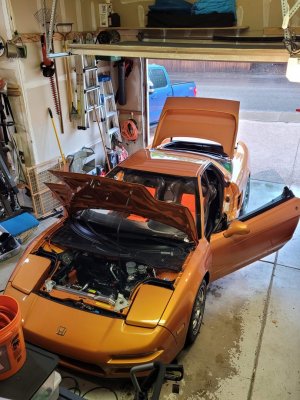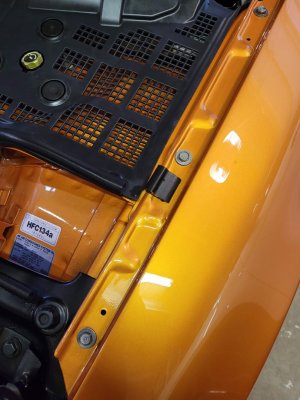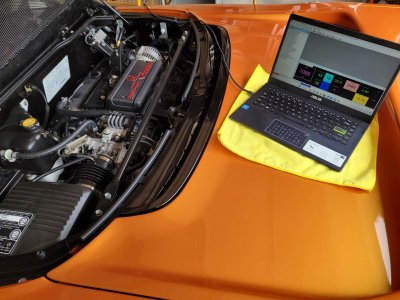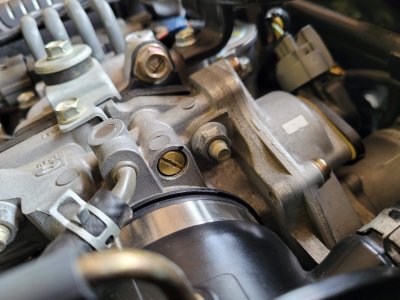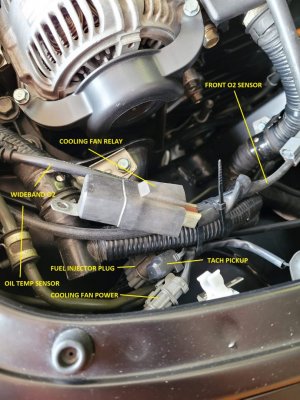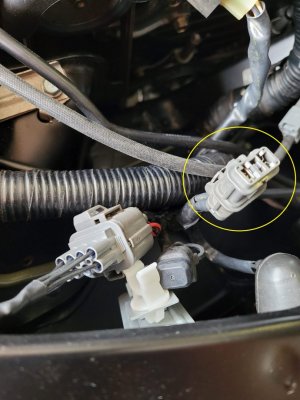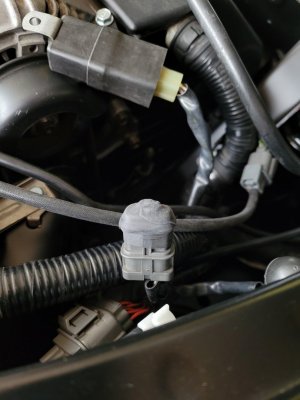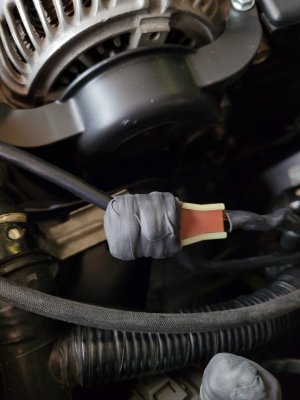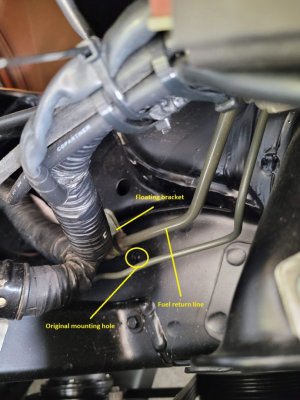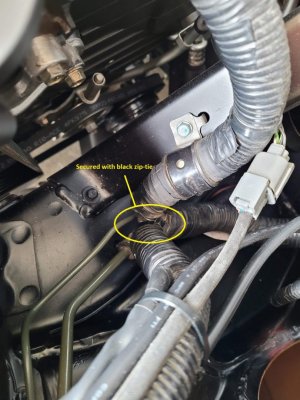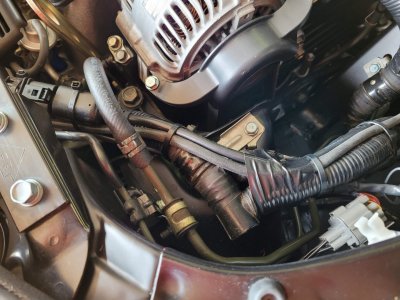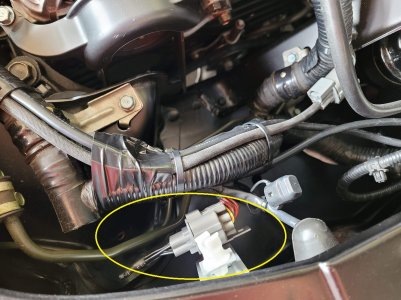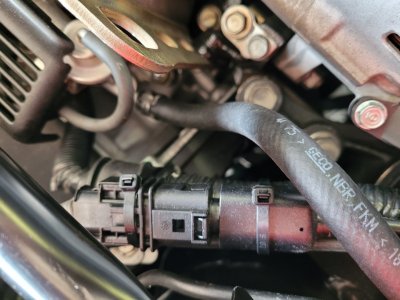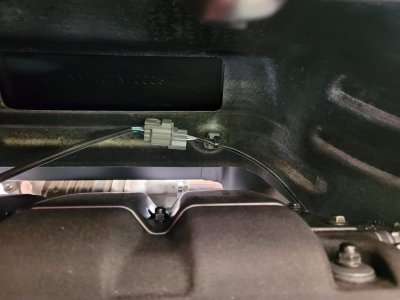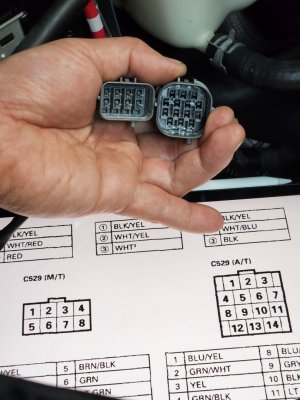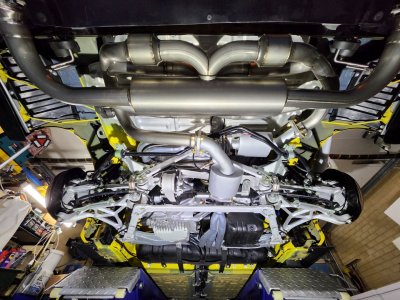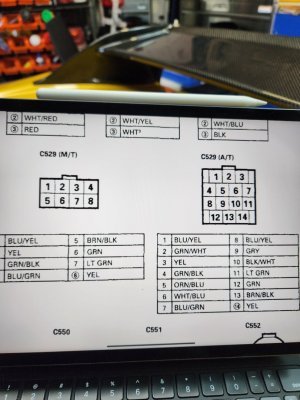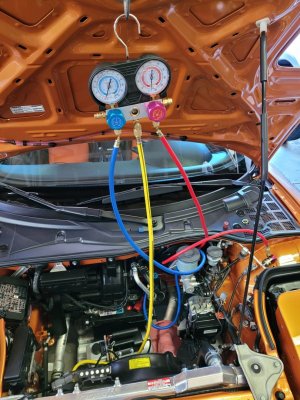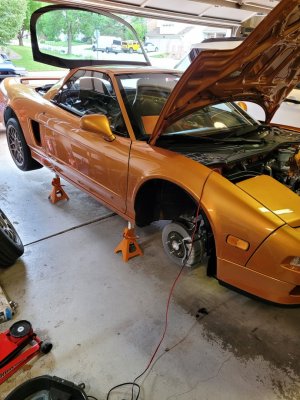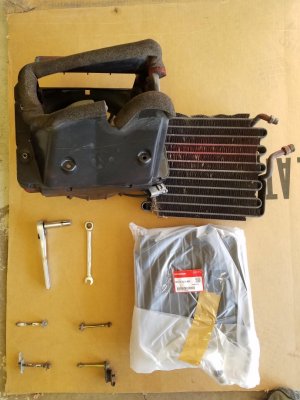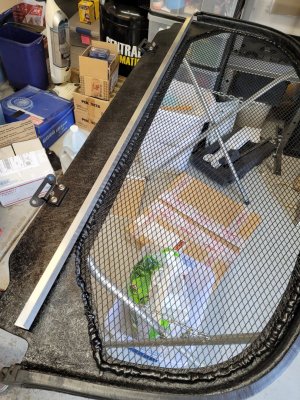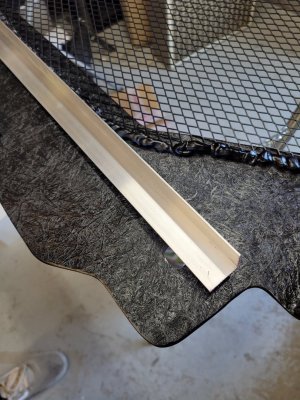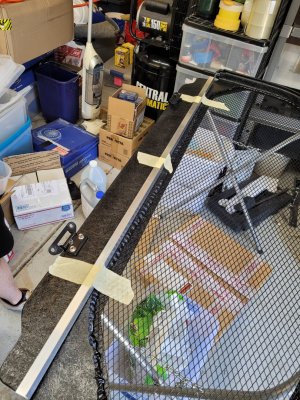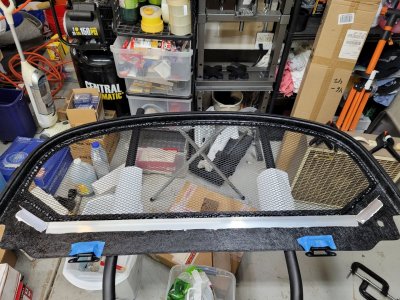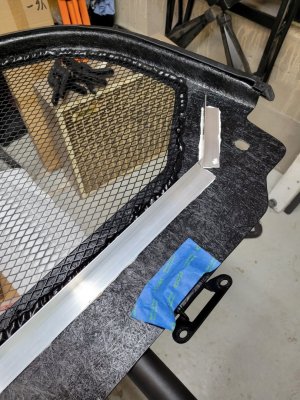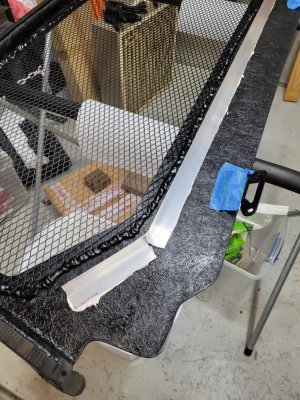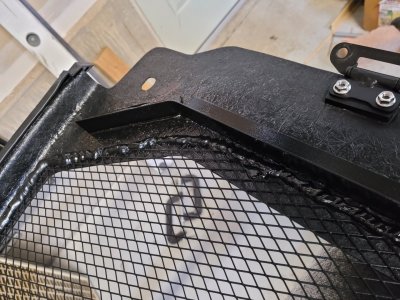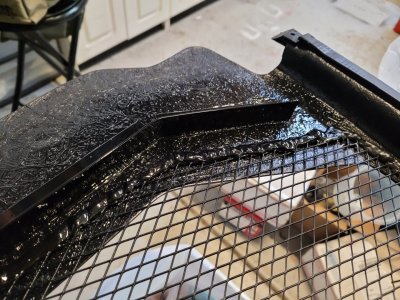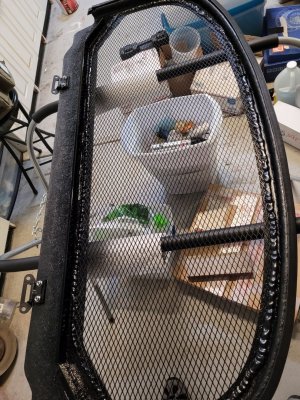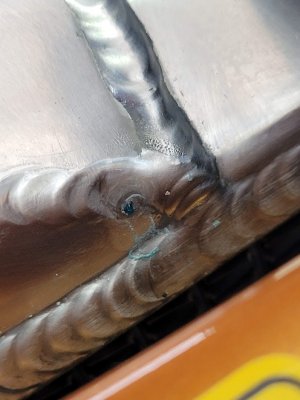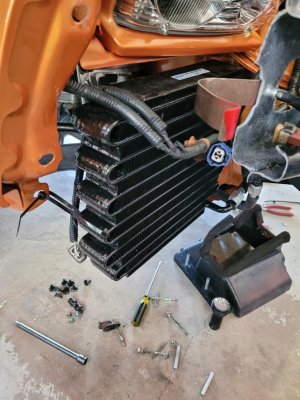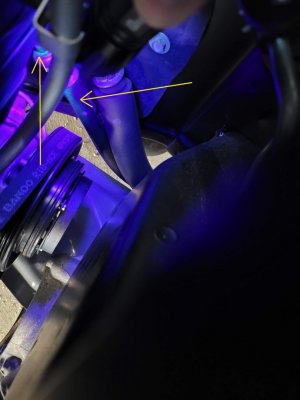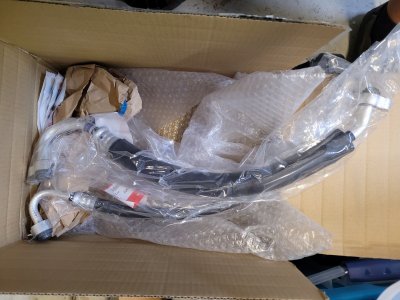AC Woes 4
Once again,
@Big McLargeHuge stopped by to lend his A/C system wisdom. Thankfully, I now have cold A/C. Since the process has been sporadically covered on Prime over the years, I'll try to provide more detail to help future owners.
First, the real key is to remove the condenser support bracket. It is held to the body with three 10mm bolts and a nut on the condenser. This provides you plenty of room to access the four bolts holding the shroud together and, more importantly, to pry apart the shroud halves.
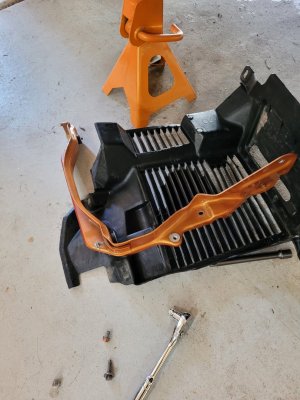
Keep in mind that with the bracket removed, you must support the condenser to avoid stressing the A/C line connections. We used a zip tie.
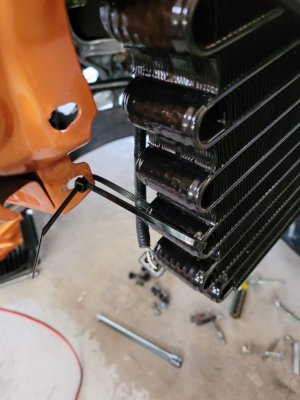
The job can be done with the bumper on the car, but we chose to remove it to improve access. We removed the shroud on the LH side with the bracket still installed, but it involved some scary prying of the condenser forward and up to create room to slide the rear half of the shroud out. Thus, for the other side of the car, we just removed the bracket and it was much, much easier. My recommendation then is to remove the front bumper and the condenser bracket. It will save you an hour of prying and fumbling with the shroud.
Next tip is to make sure the condenser is sitting flush inside the rear half of the shroud before installing the front half. If it's not in flush, the front half won't snap into place.
Finally, we found that installing the metal sleeves for the bolts first helped. And, we installed the hardest access bolts (the top ones closest to the car's body) first because you could still move the condenser around to gain better access. Still, you'll need to get a little creative. On the LH unit, for example, the A/C lines prevented a straight shot with a socket, so I had to use pliers to install the washer on the bolt and then taped the nut to a box wrench to get it on the bolt. Tyler then spun the bolt to seat it in the nut. Two people
really helps.
Now, back to the job. Nice new condenser.
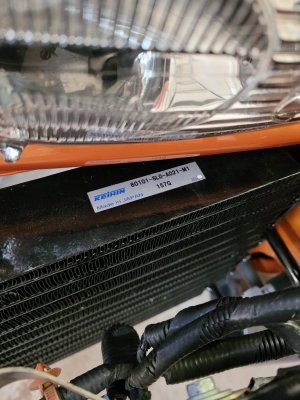
You can see the space we gained by removing the bracket.
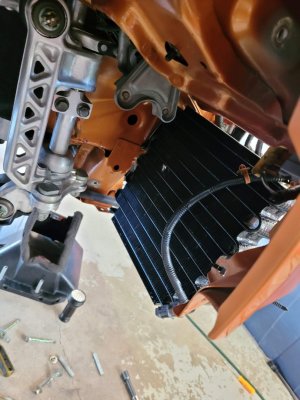
The crusty old fan motor.
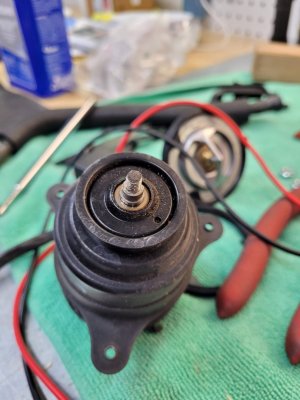
The old nut, washer and shaft collar. The new motors come with all of these new.
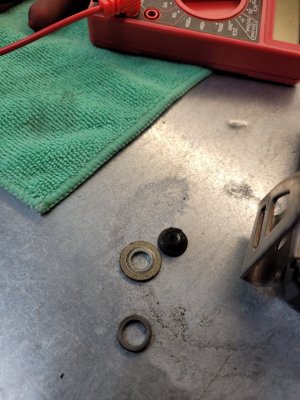
Also, the new motors ship with three spacers for the shaft collar. We just copied the original install- one space on the LH fan and two on the RH.
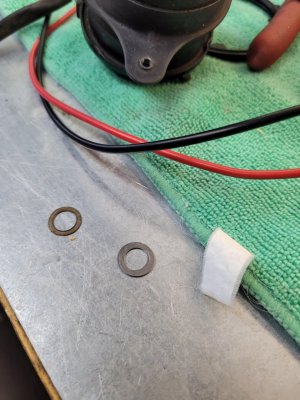
New nut on the old fan blades. We spin checked them to make sure there was no interference. Tyler also tested both new motors with 12V to make sure they ran.
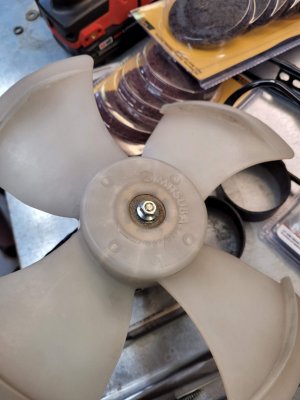
New fan installed in the shroud. They only fit one way. I regret not ordering new screws- they were pretty crusty. The JIS screwdriver was necessary to avoid stripping.
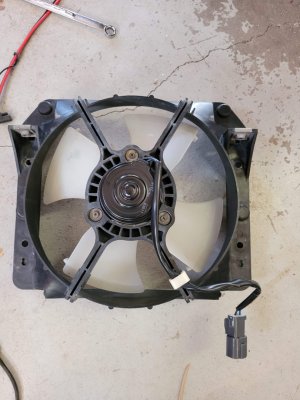
Our initial check of the system revealed a low pressure (at idle) of about 5 psi. This means we lost a good amount of gas. So now, we had no idea how much gas was left in the system. After a heavy search of Prime threads, we decided to charge the system to 28 psi on the low side and use the CFC sniffer to check for leaks.
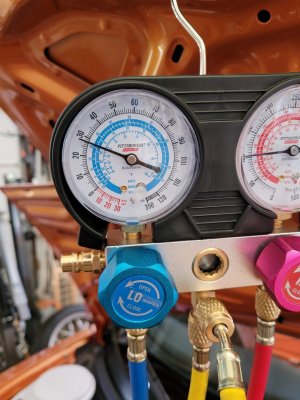
The sniffer revealed nothing. Nothing. However, using a UV light, Tyler found a very slight trace of dye on the inside seam of the high pressure line on the compressor- at the crimp ferrule. But, putting the sniffer on this joint indicated no CFC leakage. So, it's a mystery. I have new compressor hoses in a box, so we decided to address it later, since the leak appears to be too small to be detectable.
A 15 min test drive revealed that the passenger side was ice cold, but the driver side was just a "cool breeze" as Tyler put it. This means the car was still low on gas, so I filled another 100g. Final pressures (at idle) were 40 on the low side and 250 on the high side. Air temp in the garage was 95 and humidity of 30%. Plenty of bubbles in the sight glass, which I understand is normal for R134. Prime threads are all over the place on this. Some say that anything over 30 on the low side will blow up your car. Others (including Acura and NSX certified techs) say that they charge to 40-45. Others with HVAC careers say they just charge until it is cold on both sides and they see bubbles in the drier sight glass and call it good. I realize, however, that temp and humidity make a difference here, so all of them may be right lol. For my conditions, 40/250 is about right where I should be on the 91 manual chart and a little high for the 97+ chart. I may do the proper test, which is to run the car at 1,500 rpm for 15 minutes (with no one in it) and then check pressures, but the air is cold on both sides now.
So, not totally solved. The car will need to go down for a radiator repair/replacement service. At that time, I may drop the front beam and replace the compressor lines at the same time. However, I think after all this DIY stuff, I might just bring the car to a trusted shop with a A/C machine, have them finally find the leak, evac the system, let me replace the hoses, and then bring it back and fill with
exactly 850g of gas.
 Tech Bro shocked and humiliated by an old Honda. Also got a thumbs up from a nice guy in a R8 V10 a the light after that. It's a fun car.
Tech Bro shocked and humiliated by an old Honda. Also got a thumbs up from a nice guy in a R8 V10 a the light after that. It's a fun car.



